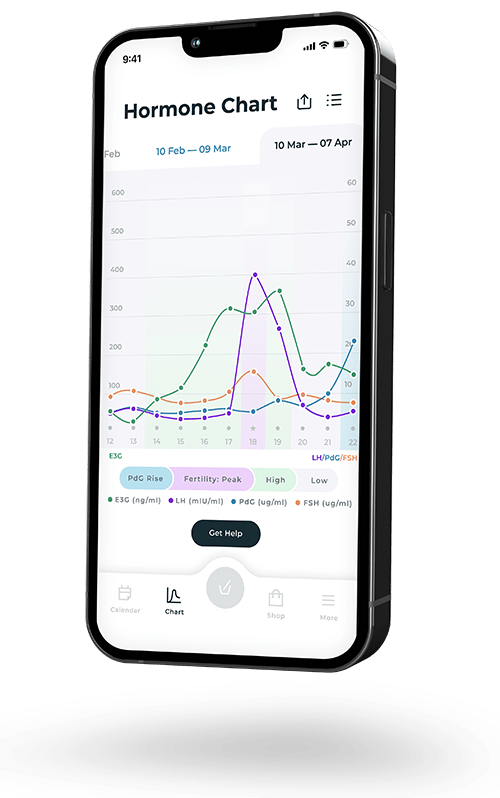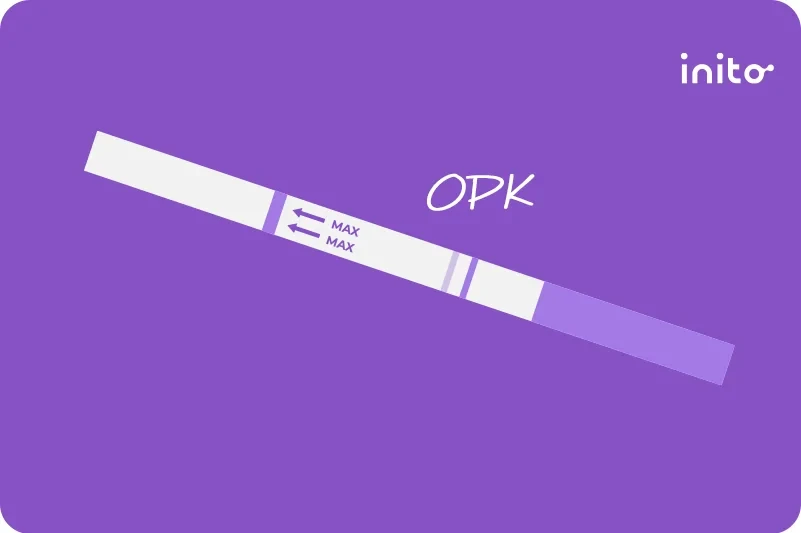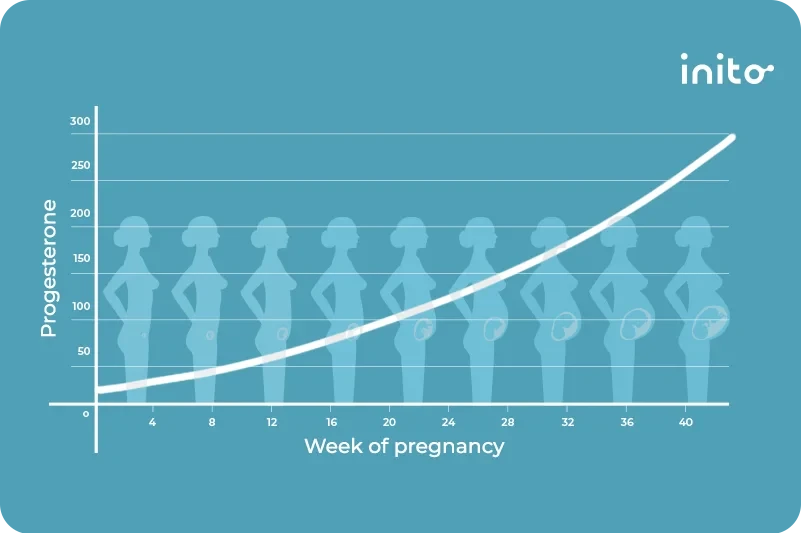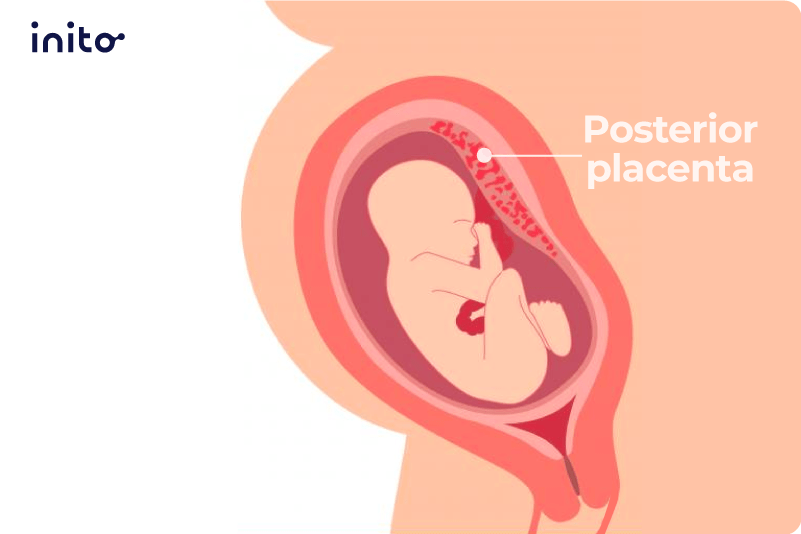Content table
Have you noticed some unexpected light bleeding or spotting a few days before your period is due?
This could be implantation bleeding, an early sign of pregnancy.
But if you’re hoping to find out for sure, you may be asking, “Can you take a pregnancy test during implantation bleeding?”
This is a great question, but it doesn’t exactly have a simple answer.
A quick recap: Implantation bleeding happens when a fertilized egg attaches to the uterine lining. It’s light and pink or brown. And it often happens about the same time you would expect your menstrual period.
See how this can make things confusing?
Taking a test at this time can lead to a false negative. The body might not have produced enough of the pregnancy hormone hCG yet.
The best time to take a pregnancy test is at least one day after your missed period. This gives hCG levels enough time to increase and show up on a test.
Don’t worry — we will get into all of that and more in this guide. So let’s get into it!
Key Takeaways
- Implantation bleeding is a normal early sign of pregnancy. It takes place when the embryo attaches to the uterine wall.
- You can take a pregnancy test during implantation bleeding. But a negative test is very likely. That’s because it’s still too early for the pregnancy hormone hCG to be at a detectable level.
- The best time to take a pregnancy test for accurate results? At least one day after your period is due.
- Implantation bleeding vs. period can be confusing. But implantation bleeding is usually much shorter and lighter than your regular period.
- Not everyone experiences implantation bleeding. So the absence of it doesn’t mean you’re not pregnant.
- The only way to confirm if you’re actually pregnant is to take a pregnancy test.
Understanding Implantation Bleeding: Timing and Duration
Implantation bleeding is a normal part of the process of the fertilized egg settling into its new home. When the embryo embeds into the uterus, it can sometimes cause a rupture in the surrounding blood vessels, leading to bleeding.
It usually happens between 6 and 12 days after ovulation (DPO) (although researchers have found that in 84% of cases, it occurs between 8 and 10 DPO).
And it can be anywhere from just a few hours to a couple of days. The average length of implantation bleeding is 1-2 days.
The bleeding should stop on its own without any intervention. And it should be very light bleeding or light spotting, which is pinkish or brownish in color.
Implantation Bleeding vs. Period: How Can You Tell the Difference?
Knowing the differences between implantation bleeding and period bleeding is important. It can help you decide whether you should take a pregnancy test at home and save unnecessary stress.
The table below shares some of the key features to look out for. Use it to help determine whether what you’re experiencing is implantation bleeding or your period.
Feature | Implantation Bleeding | Menstrual Period Bleeding |
Timing | Around 6-12 days after ovulation, before the expected period | Starts about 12- 14 days after ovulation |
Duration | Short, usually lasts from a few hours to 1–2 days | Longer, typically lasts 2-8 days |
Flow | Very light spotting, doesn’t require a pad or tampon | Can be light to heavy flow, enough to fill pads/tampons |
Color | Light pink or brown | Bright red to dark red, sometimes with clots |
Consistency | Thin, watery, sticky, and intermittent spotting | Thicker period blood flow, continuous |
Clotting | No clots present | May contain small clots |
Cramping | Mild, short-lived cramping or tingling | More intense and longer-lasting menstrual cramps |
Other Symptoms | May have mild breast tenderness, fatigue; no PMS symptoms | Commonly includes bloating, mood swings, PMS symptoms |
Frequency | Happens only in early pregnancy (about 25% of pregnancies) | Occurs every 24- 38 days during reproductive years |
Know more: Implantation Bleeding Vs. Periods: How to Distinguish?
Can You Take a Pregnancy Test During Implantation Bleeding?
Technically, yes. You can take a pregnancy test during implantation bleeding. But the results might not be accurate.
At this stage, the body is only just starting to release human chorionic gonadotropin (hCG). This is the hormone that’s detected by tests. hCG levels during implantation bleeding are often too low to register on most home pregnancy tests. And this can easily lead to a false negative.
When Is the Best Time To Take a Pregnancy Test for Accurate Results?
To answer that, we need to look into hCG, the key signal that pregnancy has begun.
An at-home test and a blood test both work by measuring the levels of this hormone in your body.
To detect hCG levels in your urine, hCG values should be at least 20 mIU/mL.
For reference, hCG can be first detected in the blood at about 8-10 days after ovulation. Levels typically double every 1.4 to 2.1 days. And urinary hCG levels increase by about 50% every day.
By the time of your expected period, levels in the blood are usually about 50-100 mIU/mL, and hCG gradually starts showing up in your urine as well.
So experts advise waiting until at least one day after your missed period to take a pregnancy test. This is because hCG levels rise predictably and significantly day by day after implantation, and it gives your body enough time for the hCG to build up to a level that can be measured reliably.
Know more: Know What Not To Do Before a Pregnancy Test
What Are the Pros and Cons of Early Testing vs Waiting?
Are you feeling antsy to take a test? We totally get it.
But we wanted to share the pros and cons of taking a pregnancy test during or just after you experience implantation bleeding versus waiting until after your period is due.
Pros | Cons | |
Testing during implantation bleeding |
|
|
Testing after missed period |
|
|
What To Do if Your Test Is Negative After Implantation Bleeding?
If your pregnancy test is negative after what you think is implantation bleeding, here’s what you should do:
- Don’t panic: A negative result right after implantation bleeding is common! It’s because hCG levels are still too low to be detected in urine.
- Wait and retest: It’s best to wait at least one day after your period due date before retesting. This gives hCG levels a chance to rise enough for a clear result.
- Use first-morning urine: Testing with your first urine of the day can improve accuracy since it’s more concentrated.
- Consider a blood test: If you want an earlier and more accurate answer, bloodwork can detect pregnancy sooner than a urine test.
- Rule out other causes: Bleeding can be caused by other conditions, like hormonal changes or infections. So, ongoing or heavy bleeding signals medical attention.
What To Do if Your Test Is Positive After Implantation Bleeding?
If you test positive during implantation bleeding, congratulations, you’re pregnant! Now you should:
- Get bloodwork done: Visit your healthcare provider to confirm with bloodwork. Quantitative hCG bloodwork is more accurate than a home test.
- Start prenatal care: Begin taking prenatal vitamins with folic acid if you haven’t already.
- Schedule the first ultrasound: Your doctor will likely schedule an ultrasound at about 6-8 weeks to check the embryo’s development and confirm a healthy pregnancy.

FAQs
No. Implantation bleeding is part of the implantation process and only happens once (if at all). It’s when the fertilized egg attaches to the uterine lining.
Implantation bleeding is often light pink or dark brown. But color alone is not a reliable way to determine whether you’re pregnant.
Many other factors, like hormonal changes or cervical irritation, can cause similar light spotting.
Implantation bleeding only happens if tiny blood vessels are broken during embryo attachment.
Not all pregnancies cause this bleeding, so its absence is completely normal.
Yes. Both can be a form of light spotting.
However, ovulation spotting happens mid-cycle, about 12-14 days before your next period. Implantation bleeding occurs later, around 6-12 DPO, which is closer to your expected period.
No. The amount or intensity of implantation bleeding does not indicate the health of the pregnancy. Generally, implantation bleeding is light, lasts for 1-2 days, and appears pinkish or brownish.
Yes. It’s possible for implantation to have happened, but for the hCG levels to be too low to be detected. This can result in a negative test.
It’s actually advisable to wait at least one day after your expected period (12-14 DPO) is due.
Most home tests aren’t sensitive enough to detect low hCG levels right after implantation bleeding. And since implantation bleeding typically occurs at 8-10 DPO, it’s best to wait at least till 13 DPO before testing.
hCG actually starts rising even before implantation! But it usually takes about 9-10 DPO for hCG levels to be high enough to be detected by bloodwork and even longer for a urine test.
Know more: How Long After Implantation Does hCG Rise?
It’s possible although unlikely. That’s because hCG has only just started to rise and is probably not at a high enough level to be detected by a home test.
Bloodwork can detect hCG earlier than a urine test. So, you could get this done as early as 9-10 DPO.
The implantation process happens when a fertilized egg attaches to the uterine lining. This happens about 6-12 days after ovulation. Most people see it happen between 8 and 10 DPO.















